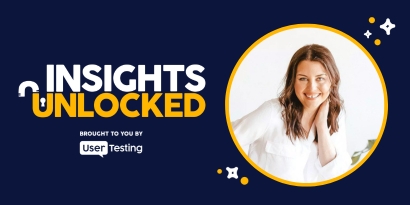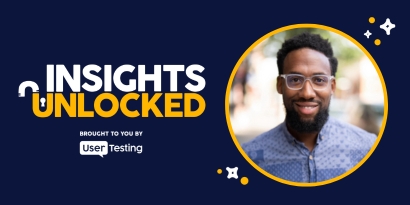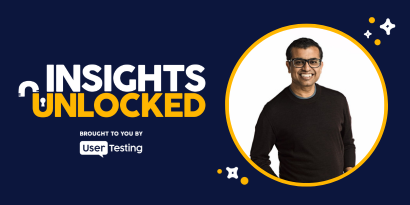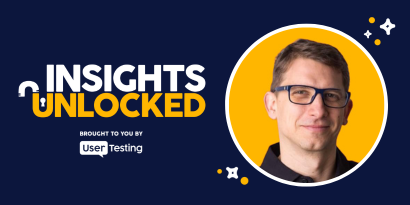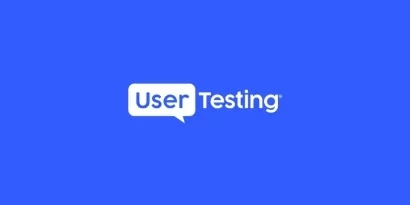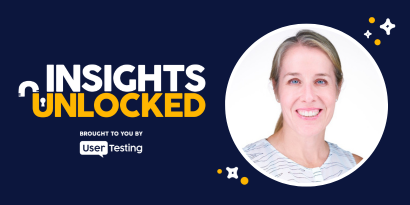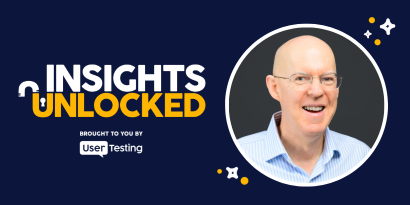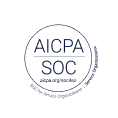
Episode 148 | December 09, 2024
Why central repositories are key to scaling research with Kate Towsey
Learn why central repositories are essential for scaling research. Discover how structured systems preserve insights and enable smarter decision-making.
Why central repositories are key to scaling research with Kate Towsey
What happens to your organization’s hard-earned research insights after a project wraps up? If the answer involves scattered files, forgotten folders, or endless Slack messages, you’re not alone.
Kate Towsey, research operations advisor and author of Research That Scales, has seen it all. During her recent appearance on the Insights Unlocked podcast, Kate delivered a clear message: without a central repository for research, teams risk losing valuable knowledge that could fuel smarter decisions and long-term success.
“A central repository isn’t just about storage,” Kate explained. “It’s about enabling decisions and making research a strategic asset.”
Towsey’s insights highlight a common challenge: research teams produce vast amounts of data, yet without a central system, those insights risk being lost, duplicated, or underutilized.
In this blog, we’ll explore the themes and ideas Kate discussed in the podcast, including why organizations need centralized knowledge systems, how to create them, and the benefits they deliver for scaling research operations effectively.
The problem: where research insights go to die
Collaboration fuels creativity, but it’s not always conducive to preserving knowledge. Kate introduced the concept of "campfires" to describe informal, collaborative spaces where teams share and refine ideas. While these environments are essential for innovation, they lack the structure necessary for long-term utility.
“Campfires are great for generating ideas and building team cohesion,” Kate noted, “but what happens when the team moves on to the next project? All that knowledge can be lost.”
The result? Insights that could inform future projects, identify patterns, or support strategic decisions are left behind, buried in individual notes, or siloed within specific teams. Without a centralized system to capture and organize these insights, organizations lose the ability to leverage their research fully.
“All that knowledge can be lost without a proper system in place.”— Kate Towsey
The solution: a central repository
To solve this problem, Kate advocates for creating a central repository—a structured, well-maintained system where research insights are stored, organized, and easily accessible. This isn’t just about archiving reports; it’s about building a foundation for scalable, impactful research.
“When someone joins a project six months later, they need to find relevant data without relying on tribal knowledge,” Kate said. “That’s the power of a central repository.”

A central repository transforms research from a transient activity into a sustainable, long-term asset. It enables teams to revisit findings, identify trends across time, and make better decisions based on accumulated knowledge.
For example, UserTesting’s EnjoyHQ platform consolidates data from multiple sources, including UserTesting and UserZoom, into a unified system. With features like unlimited storage, transcription services, and integration with over 25 tools, EnjoyHQ makes it easy for teams to analyze, share, and act on insights.
“Having a central repository means your research doesn’t just serve the present—it becomes a tool for the future,” she said.
What makes a central repository effective?
Not all repositories are created equal. Kate outlined several key characteristics of an effective central repository:
- Structure and standardization: An effective repository requires clear tagging, standardized processes, and consistent organization. This ensures that information is easy to find, even for those who weren’t part of the original project. “Repositories need a consistent taxonomy. It’s the only way to make insights reusable and searchable,” Kate emphasized.
- Accessibility: A repository is only valuable if people use it. That means creating a user-friendly interface and ensuring that the repository is easy to navigate for all team members, not just researchers.
- Future-proofing: As organizations grow, so does their volume of research. A scalable repository should accommodate this growth and allow for longitudinal studies, which can provide powerful insights over time.
- Ownership and maintenance: Kate stressed the importance of assigning responsibility for the repository. “Without dedicated ownership, even the best-designed system can fall into disrepair,” she warned.
“Repositories need structure, accessibility, and long-term scalability.”— Kate Towsey
Bridging the gap between creativity and structure
One of the key challenges in research operations is balancing the creativity of informal collaboration with the rigor of structured systems. Kate is a strong proponent of keeping both.
“Campfires and central repositories serve different purposes, and both are essential,” she explained. Campfires allow teams to brainstorm, innovate, and share ideas in real-time. But once the project concludes, the insights from those discussions need to be preserved in a central repository to ensure they’re not lost.
This dual approach ensures that teams have the flexibility to be creative while maintaining the discipline to capture and organize their findings effectively.
“Campfires are for creativity; repositories are for preservation.”— Kate Towsey
The long-term benefits of a central repository
A well-designed repository doesn’t just benefit researchers—it creates value across the entire organization. Here are some of the key advantages Kate highlighted:
- Enhanced decision-making: With all research insights in one place, decision-makers can access the information they need to make informed choices quickly and confidently.
- Scalable growth: As research teams grow, a central repository ensures that knowledge remains organized and accessible, no matter how large the team becomes.
- Time savings: Researchers spend less time searching for past insights and more time focusing on new studies, increasing overall efficiency.
- Longitudinal analysis: By maintaining consistent tagging and organization, teams can track trends over time and uncover deeper insights that would otherwise be missed.
- Stronger collaboration: A shared repository encourages cross-functional collaboration by breaking down silos and making insights available to all relevant stakeholders.
“Having a central repository means your research doesn’t just serve the present—it becomes a tool for the future,” Kate said.
“Your research isn’t just a report—it’s an asset for years to come.”— Kate Towsey
Getting started with your repository
Building a central repository may seem daunting, but Kate provided practical advice for getting started:
- Start Small: Focus on one area of research and build a repository around it before scaling up.
- Define a Taxonomy: Establish consistent tagging and categorization to ensure insights are searchable.
- Invest in Tools: Select a platform that meets your organization’s needs and is easy for teams to use. Platforms like EnjoyHQ offer robust features for organizing and analyzing data.
- Assign Ownership: Designate a team or individual to maintain and manage the repository over time.
“When you take the time to do it right, a repository becomes one of the most valuable assets your organization has,” Kate explained.
As organizations continue to grow and evolve, the importance of managing research knowledge effectively will only increase. A central repository is more than just a storage solution—it’s a strategic tool that empowers teams to make better decisions, collaborate effectively, and scale research operations sustainably.
Kate’s advice is clear: don’t wait until you’re drowning in data to build a repository. Start now, and your organization will reap the benefits for years to come.
“Having a central repository means your research doesn’t just serve the present—it becomes a tool for the future,” Kate concluded.
Episode links:
- Kate Towsey’s website
- Book: Research That Scales by Kate Towsey (available at Rosenfeld Media and Amazon)
- Community: The Cha-Cha Club for ResearchOps professionals
- An essential guide to research operations: This guide explores the definition, benefits, challenges, and implementation of ResearchOps, emphasizing the importance of structured research processes.
- What is ResearchOps: This article delves into the development of ResearchOps and its critical role in scaling user research within organizations.
